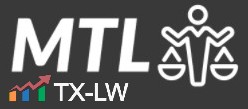Our tax system is based on an arbitrary calendar or fiscal year. It measures income and expense and applies various rules based on this arbitrary period of time. This can create complications, as the arbitrary time may not capture the true essence of what is going on.
Take the case of civil litigation where the defendants receive illegal income and pay income taxes on it in year 1. Then in a later year, say year 2, the defendant repays or refunds the illegal income. If the time period for correcting the year 1 tax returns has passed, what happens? Does the defendant end up out of luck and just have to accept that they overpaid their taxes?
This is where the tax benefit rule comes in. When defendants repay funds previously reported as income, can they deduct the repayments? But what if fraud was involved? When defendants repay funds previously reported as income, can they deduct the repayments if fraud was involved? The 1982 tax court case of Perez v. United States, 553 F. Supp. 558 (M.D. Fla. 1982) examined this issue in the context of settling a qui tam claim.
In 2008, the IRS issued CCA 200808019 to address similar themes around the “claim of wrong” doctrine in a memo analyzing another taxpayer’s settlement of alleged improper short-swing profits. Together, these sources provide guidance for defendants seeking beneficial tax treatment of settlements connected to alleged wrongdoing.
Contents
Facts & Procedural History
In the Perez case, the defendants settled a qui tam lawsuit alleging they submitted false Medicare claims. The defendants sought to deduct the settlement repayment on their taxes under the tax benefit rule.
A qui tam lawsuit allows a private citizen to sue someone defrauding the government and recover a portion of the proceeds. The relator, or whistleblower, must provide evidence and assistance in prosecuting the claim.
Qui tam comes from a Latin phrase meaning “he who sues on behalf of the king as well as for himself.” These cases often involve alleged fraud by government contractors or healthcare providers improperly billing public insurance programs.
The IRS disallowed the deduction during its IRS audit, arguing the alleged fraudulent nature of the original payments meant the defendants had no undisputed right to the income. The trial court agreed, finding deductibility depends on whether the payments resulted from undisputed legal rights or illegal activities.
The Tax Benefit Rule
Normally taxpayers can deduct repayments of previously reported income under the tax benefit rule, essentially correcting the prior tax treatment. However, the courts limit this to repayments deemed improper or fraudulent.
To qualify for the tax benefit rule, it must appear that the taxpayer had an unrestricted right to the payment in the year in which they received the payment. The courts have created a rule that says that taxpayers are not entitled to claim of right deductions or credits if the income was received on account of fraud or wrongdoing.
The idea is that a taxpayer who commits fraud knows or should know that they do not have an unrestricted right to income. A question arises where the taxpayer settles the claim without admitting or being found to have committed fraud – even though the taxpayer’s fraud is apparent.
The IRS issued its legal memorandum in 2008 to address the situation Perez sets out, saying that the IRS must scrutinize the settlement agreements and the intention of the parties to determine whether the settlement was for wrongdoing and whether there is sufficient nexus between the repayment and the income that was previously reported.
IRS Memo on Claim of Wrong Exception
In its recent memo, the IRS analyzed whether the “claim of wrong” exception applies when a taxpayer repays income from alleged short-swing stock profits upon settlement of a Section 16(b) lawsuit.
The IRS noted that the claim of wrong exception generally bars deducting repayments of income obtained illegally through criminal acts like embezzlement. However, it does not necessarily apply to civil settlements where wrongdoing is alleged but not proven.
The memo states the IRS must scrutinize whether, based on facts and circumstances, a sufficient nexus exists between the restored income and alleged fraudulent activities. Even without admission of guilt, indicators of intent to improperly obtain the original income could defeat deductibility.
Competing Policy Interests
The IRS memo and the Perez case address the competing policy goals of preventing tax benefits from ill-gotten gains while equitably treating settling parties. If a settlement occurs, complex tax questions can arise for the defendant regarding the treatment of the settlement payment and potential deductions.
The Perez decision and IRS guidance highlight competing policy priorities in tax law:
- On one hand, the government aims to deter fraud and wrongdoing by prohibiting tax deductions for repayments relating to fraudulent activities. Allowing deductions essentially subsidizes the original misconduct. However, strictly denying deductions punishes settling defendants who don’t admit guilt. Settlement repayments functionally correct the prior tax treatment.
- If fraudulent intent is unclear, equitable considerations suggest settlement payments should be deductible, putting the parties in the positions they would have occupied absent the alleged wrongdoing. However, investigating intent imposes an investigative burden on tax authorities and risks incentivizing sham settlements to enable deductions.
The IRS memo and the Perez demonstrate how cases at the intersection of these competing goals create challenges. In Perez, the court sought to balance policy concerns but prioritized fraud deterrence by scrutinizing the surrounding circumstances. Since the defendants settled without admitting wrongdoing, the court had to closely analyze the intent and link between the qui tam claims and the repaid income. In denying the deduction, the trial court set a precedent that even settling parties can be precluded from deducting repayments if fraud contributed to the original income receipt.
The Takeaway
Together, Perez and the IRS memo demonstrate the delicate balancing of policy goals in these scenarios. Strictly prohibiting deductions deters fraud. However equitable considerations arise when guilt is unclear. Courts analyze the intricacies of each case to weigh fraud deterrence against equitable treatment of settling parties. Thoroughly documenting settlements becomes critical to support tax positions. The Perez ruling and IRS guidance clarify that even civil settlements related to alleged improper activities face high hurdles in claiming tax benefits on repayments. Defendants should consult experts to navigate the complexities when seeking deductibility.
This case highlights complications for qui tam defendants seeking tax deductions for settlement repayments. Even without a finding of guilt, fraudulent intent behind the original payments can bar deductibility. Defendants should consult tax experts when structuring settlements and tax positions. Thoroughly documenting the basis of settlement terms is essential. Despite no admission of wrongdoing, mere accusations of fraud may defeat tax benefit claims if sufficiently substantiated.
In 40 minutes, we'll teach you how to survive an IRS audit.
We'll explain how the IRS conducts audits and how to manage and close the audit.


